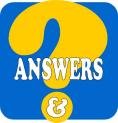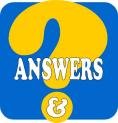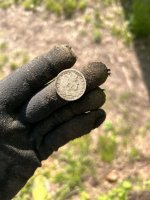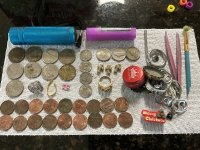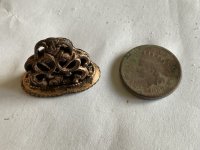Mona Lisa
Gold Member
- Jan 13, 2005
- 5,112
- 36
- Detector(s) used
- White's DFX & a Sunray probe
- Primary Interest:
- Relic Hunting
I see alot of posts on using screwdrivers and coin probes. How do you use these to remove coins? How can you tell if its a stone or a coin?
I guess I could see using them on the beach or something, but not in PA. I just don't understand how you can use a probe instead of digging a hole with a trowel.
Enlighten me!! Haupin
I guess I could see using them on the beach or something, but not in PA. I just don't understand how you can use a probe instead of digging a hole with a trowel.
Enlighten me!! Haupin
Upvote
0


 ~CO2
~CO2

